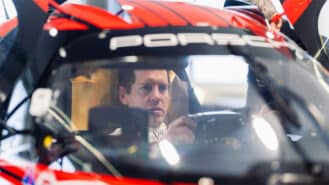
Only Tsunoda can save F1 in 2025: Japan GP – Going up, going down
In the face of soul-destroying boredom, only one driver can bring the entertainment needed to rescue a sport which resembles a broken AI tribute to itself
I am aware of nothing more ridiculous in the entire car industry than the way in which CO2 emissions are measured. Were this a small side issue, an unimportant statistical anomaly it would still need addressing. In fact it’s an issue upon which the sales success of entire ranges of cars depend.
As is well known, across Europe cars are taxed on the amount of CO2 they produce. What is less well known is how that figure is calculated. Would it surprise you to learn that there is no requirement for a car’s emissions to be measured on a road? In fact it’s all done in laboratories. Were the test actually representative of how people drive their cars, this might be an entirely sensible measure: so long as all the equipment used by each manufacturer was properly calibrated, the results would be free from distortion caused by wind, rain, surface and gradient that occur in the real world. But it’s not. The test is a joke.
Rightly, the test sets out to measure a car’s fuel consumption because the link from mpg to CO2 is clear and incontestable: one litre of petrol burns to produce 2.32kg of CO2, or 2.66kg if it’s diesel. But the test itself? Well you decide.
The test takes place on a rolling road with the engine started from cold. The entire procedure lasts only 19 min and 40 seconds during which the car covers the equivalent of just 6.8 miles, and at an average of 20.9mph. During this time the car will spend 6 min 40sec on the ‘extra-urban’ cycle travelling at an average of 38.9mpg. The maximum speed the car reaches is 75mph and that only for an instant. There is no requirement for the car to cruise for any measurable period of time at a motorway speed. And the figure quoted by the car manufacturer need only be within four per cent of what it actually records.
The result of this is that now thousands of car engineers are directly involved in what is known in the industry as ‘cycle-beating’. There is nothing illegal in this: indeed all they are doing is optimizing their cars to do as well as possible in the test, and as sales depend on the results you can hardly blame them. But it has little to do with making cars better for us to drive or more frugal to use in the real world.
Measures designed to beat the cycle include raising overall gearing because the benefits show up on the cycle far more than on the road. Because the cycle is the same whether you’re testing a Beetle or a Bugatti you can also programme automatic transmissions to change at points optimum to the cycle. Tests have to be conducted on the second widest tyres available, so you can make sure those tyres are in low rolling resistance specification. Or you can provide your car with driver-selectable throttle maps with one default map for excellent cycle performance and another rather sharper, albeit it thirstier, map which drivers will actually choose to use on the public road. And all this before getting into the nonsense that hybrid vehicles make of the cycle.
But it’s easy for people like me to stand on the sidelines and carp. The question the EU is now once more looking at after sustained pressure from car manufacturers, is what should actually be done about it?
I have long held the view that any type of laboratory-conceived cycle will always be open to abuse and eventual failure. What’s needed is to get rid of the labs, the red tape and, with it, all the wriggle room inherent in the current system. Allow manufacturers to self-certify and publish whatever figures they choose. But before this is implemented, Vehicle Certification Agencies across Europe would have been commissioned to install simple telemetry devices in a range of cars driven by normal people in a normal way on normal roads. This would be used to build a database of information from hundreds of thousands of real journeys from which a far more representative drive cycle could be created. Then all the EU would have to do is pluck cars at random from production lines, test them according to this new protocol, and if the results did not tally with manufacturer claims, apply the appropriate sanction.
It wouldn’t be perfect, but it would be far more representative than anything in existence today and incentivise manufacturers to make cars more frugal and therefore produce less CO2 in the real world, not just in the laboratory.

In the face of soul-destroying boredom, only one driver can bring the entertainment needed to rescue a sport which resembles a broken AI tribute to itself

Waking up at 4am on a Sunday is rarely worth it, especially when Max Verstappen looks poised to take another lights out to chequered flag victory — as he did…

Should there be a new prize for a team finishing sixth in the championship – just like the Jim Clark Trophy in the good old turbo times?

Sebastian Vettel is set to test a Porsche 963 Hypercar, having already been linked with a Le Mans drive. But would his return really add that much to the world of racing?